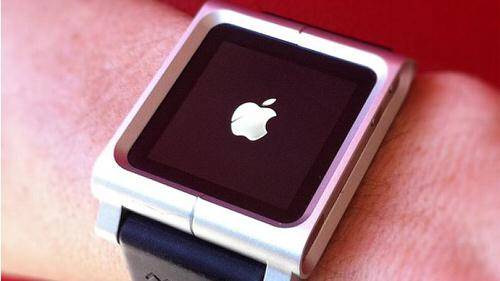
Every time the Apple iWatch rumor comes around, I can’t help but get excited. It’s not just the Dick Tracy childhood nostalgia that so many of us seem to share, although that’s certainly part of it. I hope Apple is really building an iOS-integrated smart watch not just because it’s futuristic, but because I want to tinker with my phone less. And I hope the iWatch is just the beginning helping me do that.
Apple’s rumored foray into wearable computing fits nicely into the popular narrative suggesting that’s where the future lies. We appear poised to start moving beyond gadgets and toward a world in which operating systems and voice-controlled artificial intelligence are woven into our homes, cars and lives.
Why A Smartwatch Makes Sense
Wearable, connected devices are a natural next-step in that evolution. As Nick Bilton points out, a smart watch will be a much easier sell for everyday consumers than the cyborg-esque augmented reality glasses Google will soon be hawking. Apple has patents and plans for head-mounted displays too, but a watch is a much more natural place to start with wearables targeted to a mass market.
With our smart watches, we’ll be able to get important notifications, send and receive messages and return basic information from search engines without pulling a small electronic brick from our pockets and hiding our faces behind them. It’s why early reviews of the Pebble smartwatch say it “changes the entire dynamic of being connected.”
The Pebble is a good start, but its interface is grayscale and low-res and its iOS integration remains very limited. I’m counting on Apple to produce a far more polished, better-integrated wristwatch, complete with curved glass and its usual atttention to visual detail.
Smart, Connected Objects Galore
While they’re at it, I hope the Apple iWatch team is looking into how to bake iOS into any number of other non-smartphone, non-tablet devices. They’re already working with car manufacturers to tighten dashboard and steering wheel integrations. That’s wise considering that soon every new car will be Internet-connected. And of course there’s the longstanding speculation about a voice-controlled smart HDTV. Apple should push forward with cars and TVs, but it should take iOS much further than that.

For example, I’d love an inexpensive, lower-power tablet -perhaps with one of those flexible displays everyone’s so excited about – that I can hang on my kitchen wall to conveniently display my calendar, a Photo Stream, to-do items from Reminders and a simple notepad. All of it should be synced online with my other, more multi-functional devices. Perhaps it will one day talk to my connected, grocery-aware refrigerator.
In other rooms, we could have interfaces geared toward context-relevant tasks. Again, all of it will be synced via iCloud with a version of Siri that has evolved into something like Nuance’s cross-device voice-control project called Wintermute (but even better). Sure, we’ll likely still have one or two central, more powerful computers, but they will be supplemented by various gadgets, appliances and connected surfaces throughout the home, office and wherever.
Of course, when I say Apple, I really mean Apple, Google, Microsoft and whoever else wants to push these things along. Apple seems best positioned to polish futuristic concepts with a shine that will entice even techno-phobes, whereas Google could push the envelope with some truly geeky, innovative concoctions.
Beyond The Smartphone
Tablets and (especially) smartphones have begun to change so much about our day-to-day lives, but their form factors often make for a somewhat awkward integration into our worlds. At home, we carry a tablet from room to room, its purpose changing each time we cross a new doorway. Everywhere else, we have to kepp pulling the tiny computers out of our pockets to complete all kinds of tasks. Quite often, we’re just checking for the notifications our brains have been conditioned to expect, tuning out our physically present friends and family in the process.
A lot of us are looking forward to connected this future that relies less on the kinds of gadgets we lust after today, but is nonetheless more connected than ever – the network is just woven into our lives more seamlessly. Projects like Google Glass and iWatch promised to be some of the first and most important steps toward that. Hopefully we won’t look too goofy in our cyborg goggles or talking to our wrists.









